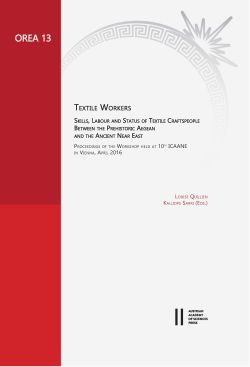
Textile Workers. Skills, Labour and Status of Textile Craftspeople Between the Prehistoric Aegean and the Ancient Near East, pp. 139-148, 2020/04/30
Proceedings of the Workshop held at 10th ICAANE in Vienna, April 2016
For a long time, sexual identification of the dead was exclusively based on the material associated with them. Jewels would have characterised the graves of females whereas weapons were reserved for men. Spindle whorls, for instance, were systematically considered as belonging to the graves of females because the link between textile work and women seemed obvious. The aim of this communication is to address this issue with data provided by the cremation burials excavated at Tell Shiukh Fawqâni (Syria) and dated from the Late Bronze Age to the beginning of the Iron Age. After a presentation of the textile tools and the difficulties of identification raised by some of them, I will discuss their association with the graves of females (established on the basis of bone analysis) and finally review their possible meanings. Are textile tools markers of gender, do they reflect the main occupation of the deceased during his/her life or do they have a symbolic significance?
Keywords: Syria; graveyard; cremation; textile tools; gender